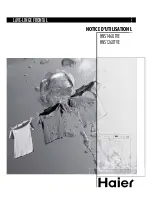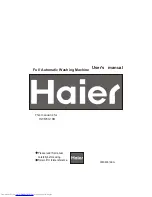
8
8.
Connect the other end of high-pressure hose to the water
outlet on the washer and tighten securely (Fig. 8).
m
WARNING!
Keep hose away from sharp objects.
Bursting hoses may cause injury. Examine hoses regularly and
replace if damaged. Do not attempt to mend a damaged hose.
9.
Connect the garden hose adapter (female coupler) to
the water inlet of the pressure washer, then thread your
garden hose (male end) into the garden hose adapter
(Fig. 9). The garden hose must have an internal diameter
of at least 1/2 in. (13 mm) and must be reinforced.
The water supply must be at least equal to the washer
delivery capacity.
NOTE:
The machine is not suitable for connection to the
potable water main.
10.
Attach garden hose to water supply (Fig. 10).
m
WARNING!
Do not connect to potable water system.
m
WARNING!
If connection is made to a potable water
system, the system shall be protected against backflow.
m
WARNING!
The intake water temperature must not
exceed 104ºF/40ºC. The water supply must not exceed
101 PSI.
m
CAUTION!
The washer must only be used with clean
water; use of unfiltered water containing corrosive chemicals
will damage the washer.
m
CAUTION!
To prevent damage to the appliance, do not
allow it to operate dry. Before starting the appliance, make
sure that it has proper and stable supply of water.
Operation
Using the Pressure Washer
m
IMPORTANT!
This pressure washer is equipped with
a micro-switch sensitive to water flow. This Total Stop System
(TSS) senses water flow in the pump. When the trigger is
released, water stops flowing through the pump. The TSS then
automatically turns the motor off to protect the pump from
overheating, thus saving energy and prolonging pump life.
1.
Position the washer as CLOSE as possible to the
water supply.
2.
The washer must be used on a secure and stable surface
in a standing, upright position (Fig. 11).
R
Fig. 8
Water outlet
High-pressure
hose
R
Fig. 9
Garden hose
This end to
machine
Garden hose adapter
(male end)
Fig. 10
Connect to water supply
Garden hose









































